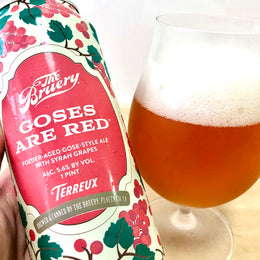
Spring Valley is Kirin's bid to move into the slightly more experimental craft beer space, and actually takes its name from only Japan's second brewery to have been established, and was actually the precursor to Kirin as we know it today.
Quick recap: Spring Valley was Japan's second beer brewery, and was established in Yokohama by William Copeland, who was Norwegian by birth but after having learnt beer brewing in Germany, had moved first to the US and then to Japan to produce his beers - what he called Spring Valley Brewery. This became the early introduction of European styled beers in the local Yokohama taverns, which would eventually make their way to Tokyo and Nagasaki.


The original Spring Valley Brewery.
Long story short, Copeland wasn't a particularly astute businessman, and the brewery eventually was auctioned off, and eventually renamed the Japan Brewery Company, which created their new beer, Kirin. This was of course a huge success, and the company was renamed as Kirin altogether. Eventually in 2014, as Kirin began to take notice of the growing craft beer category, thought it best to revive the Spring Valley name, and there we have it.
We'd previously tried flagship Hojyun 496 IPA and the Silk Ale, now it's time to try the third in Spring Valley's flagship lineup - the Japan Ale or <香>.

Iwate Prefecture has been the hops engine that's driven Japan's craft beer movement.
This is a pale ale that combines the use of foreign hops and Japanese hops aimed at producing a Japanese citrus scent. But more specifically, this brew focuses on the use of a proprietary Japanese hop created by Kirin, named the Murakami Seven, and also the Ibuki Japanese hop.
The Murakami Seven hops was developed by hop researcher Atsushi Murakami, and was apparently discontinued in the past for its unique scent that is said to be incompatible with commercial lagers. Murakami thought it would be a waste to discard the hops and had apparently decided to continue cultivating it in secret in the corner of his field in Oshu City, at the Iwate Prefecture. According to Kirin, the hop rose back to prominence when the craft beer trend began to take off, as it offered unique scents of fig, tangerine and muscat.
Let's give it a go!
Spring Valley Japan Ale, 6% ABV | スプリングバレー<香> - Review

Tasting Notes
Color: Shimmery Gold
Aroma: Bright estery, gently sweet green muscat grapes, there’s some honey here as well, somewhat reminiscent of champagne. There’s alot of freshness about it.
Taste: Silky, velvety body, with light sweetness of honey and a fresh, almost floral hit of hops - more aromatic, slightly green but not all that bitter. There’s some citruses here too, oranges, and then a light bit of grapefruit. Over time the hoppy pine notes show up alittle bit more, with some pepper, but only with a light smack of bitterness.
Finish: More grapefruit with that light tart bitterness, grapefruit pith as well, and then more of the green hops but as with the palate is more aromatic and green, only slightly bitter. There’s a bit of oiliness as well. Nice bit of chewy sweet cooked barley.

My Thoughts
Once again Spring Valley does not disappoint! This was a very enjoyable, solid brew! Really nice and somewhat differentiated muscat and champagne aromas, before a more classic pale ale profile on the palate. I like that its flavours are very all rounded and friendly, it’s lightly sweet, bitter and citrusy - never too much of either. Really nice silky body and honestly just very aromatic. On the finish it’s alittle more accentuated the hoppiness but again, it keeps things easy, not one of those aggressive IPAs that are really bitter. In fact, the hoppiness here really comes off more aromatic, like walking through a misty pinecone forest in Europe in the morning.
Overall, it’s very well-rounded, not too dank but not cloying either, really aromatic, nice flavours and body, it’s sufficiently heavy without being a full meal.
Solid, solid stuff!
My Rating: 7.5/10
Score/Rating Scale :
- 9-10 : Exceptional, highly memorable, 10/10 would buy if I could.
- 7-8 : Excellent, well above most in its category, worth considering buy-zone.
- 4-6 : Good, okay, alright; a few flaws, but acceptable; not bad, but not my personal preference; still worth trying, could be a buy if the price is right.
- 1-3 : Not good; really did not enjoy; wouldn't even recommend trying.
- 0 : Un-scored, might be damaged, new make, or very unusual.
Kanpai!

@111hotpot







